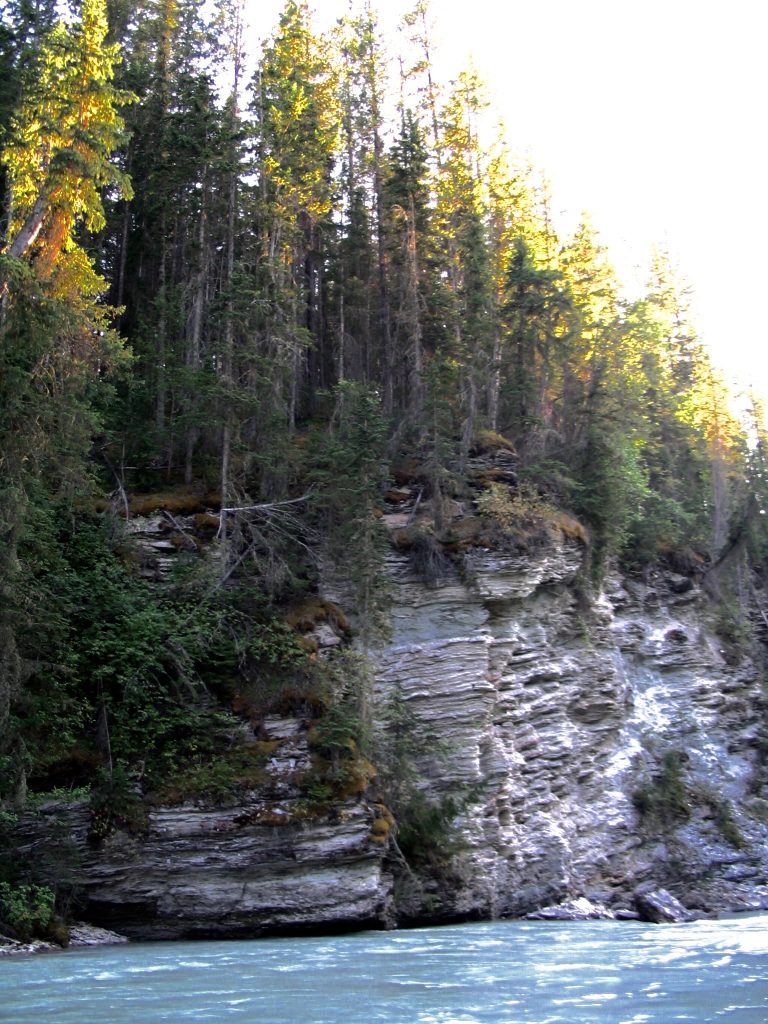8.3 Controls on Weathering Processes and Rates
Weathering does not happen at the same rate in all environments. The same types of weathering do not happen in all environments. There are a variety of factors that determine what kinds of weathering will occur, and how fast the processes will proceed.
Climate
Water and temperature are key factors controlling both weathering rates and the types of weathering that occur:
- Water is required for chemical weathering reactions to occur.
- Water must be present for ice wedging to happen.
- Higher temperatures speed up chemical reactions.
- Climate will determine whether water is present mostly in liquid form, solid form (ice), or both.
- Climate will determine what plant life is available to force rocks apart with their roots, and to contribute organic acids to soils to aid in chemical weathering.
This means, for example, that chemical weathering will be faster in a tropical rainforest than in the Arctic, a cold desert. It means physical weathering will be the predominant form of weathering in the Arctic.
Oxygen and Carbon Dioxide
The presence and abundance of oxygen and carbon dioxide affect chemical weathering rates. Surface environments on Earth almost all have some free oxygen available, permitting oxidation reactions to take place. Exceptions are in settings such as deep lakes or swamps where oxygen cannot easily mix into the water, and where biological processes consume the oxygen rapidly.
Carbon dioxide, which acidifies water and contributes to chemical weathering, is more concentrated in some settings than others. For example, because of the activities of organisms, soils can have very high concentrations of carbon dioxide, whereas carbon dioxide concentrations will be lower on surfaces free of soils and exposed to the atmosphere.
Minerals
The minerals making up a rock will determine what kinds of chemical weathering reactions are possible, and how rapidly chemical weathering reactions occur. Under the same conditions, dissolution of the calcite making up limestone will occur more rapidly than hydrolysis reactions happening to feldspar in granite. Quartz is very resilient to chemical weathering, and will remain long after calcite and feldspar have been weathered away. A rock with grains cemented by calcite will weather faster than a rock with grains cemented by quartz.
In general, differences in the rates of chemical weathering among minerals can be broken down as follows:
- Minerals that weather by dissolution (e.g., halite, gypsum, calcite) are the easiest to weather.
- Silicate minerals with lower silica to oxygen ratios (e.g., silicates made of isolated silica tetrahedra or single chains) are easier to weather than silicate minerals with higher ratios (e.g., those made of silica tetrahedra arranged sheets or frameworks).
- Minerals that are by-products of chemical weathering are some of the most resistant to further chemical weathering, although they may be more prone to physical weathering (e.g., clay minerals).
Weathering Makes Weathering Go Faster
Weathering accelerates weathering. Physical weathering forms cracks and breaks rocks apart into smaller pieces. The smaller the pieces, the greater the surface area exposed to chemical weathering. When the newly exposed surfaces are exposed to chemical weathering, it weakens the rock even further, making it more susceptible to physical weathering processes.
Differential Weathering
When rocks in an outcrop weather at different rates, the result is called differential weathering. Differential weathering causes some beds in an outcrop to be recessed relative to the others, because beds that are slow to weather will take longer to recede than weaker beds (Figure 8.15).


